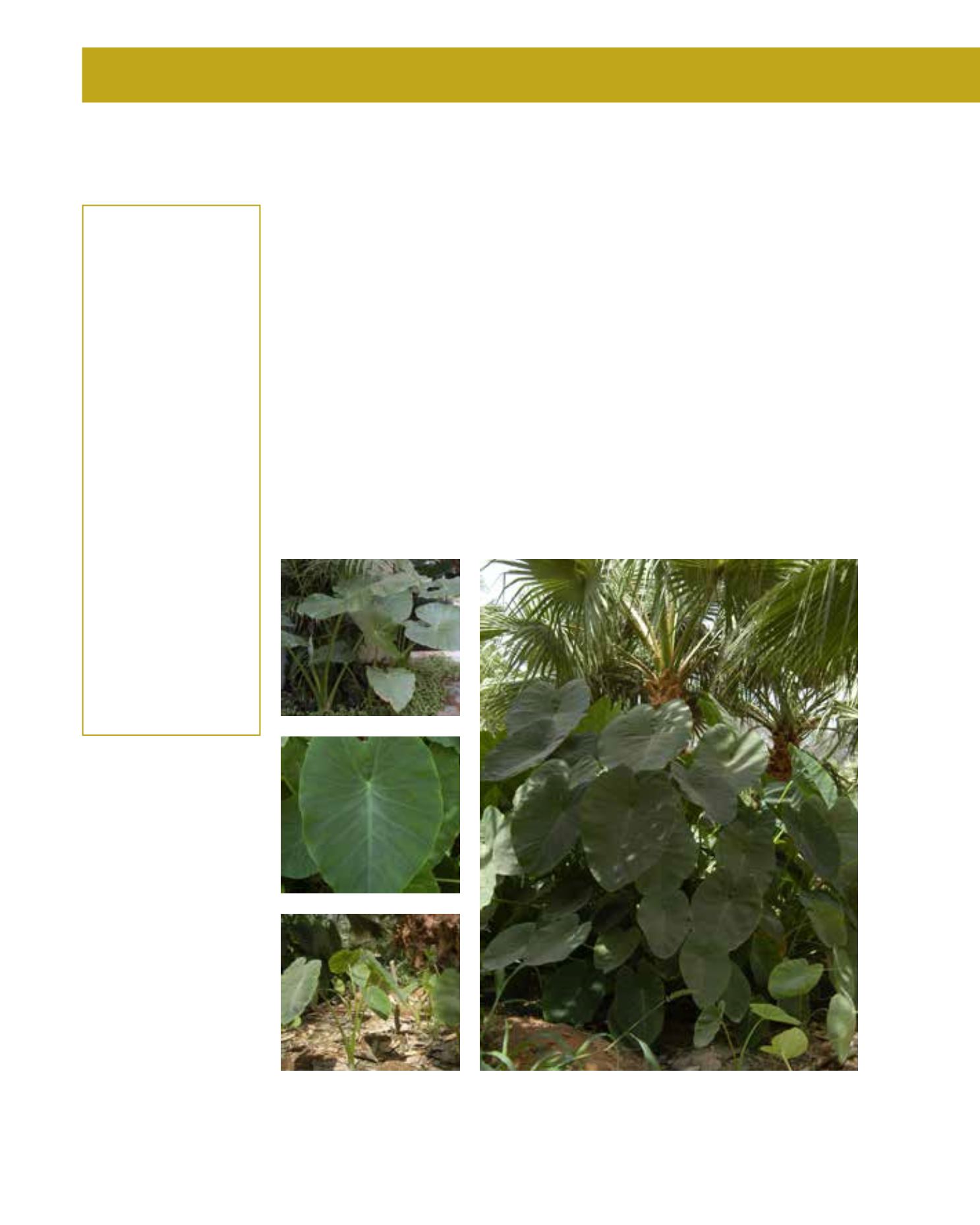

GENERAL
Origin
:
sub-tropical,
tropical
Vigour
:
fairly fast
growing
Humidity
:
very humid,
extremely humid
Propagation :
division, cuttings
Maintenance :
moderate
CONDITIONS
Urban climate :
vulnerable
Dessication :
vulnerable
Stagnant water :
vulnerable
Irrigation
:
high
Salinity/ppm :
low (1000 ppm)
Hardiness
:
+6°C
SHAPE
Type
:
perennial
Height
:
3 m-4.5 m
Spread
:
2 m-4 m
Foliage
:
evergreen
FLOWER
Colour
:
pale yellow
Size
:
23 cm
Period
:
January - May
FRUIT
Type of fruit :
berry
Fruit size
:
1 cm
Toxicity
:
edible when
processed
This bold, evergreen perennial is native to the rainforests of southeast Asia and northeast Australia.
Accordingly, it demands high moisture and good humus. It will survive in protected, shaded
gardens in Arriyadh, where air humidity is relatively high. The soil should not be alkaline and
salt tolerance is low. It grows to more than 4 metres in height and almost as wide. Alocasia will
take shade beneath mature trees or in a courtyard. It copes with wet soil, but it is vulnerable to
stagnant water and needs to be protected from the wind, which may twist its huge leaves. They
easily reach 1.5 to 2 metres in length on a stalk of 1 metre, and make this plant deserve its name
Elephant’s Ear. A variegated cultivar is sometimes available, but is highly susceptible to intensive
sunlight and smaller in size. Its leaves are mottled with cream and white. Pale yellow flowers
appear on mature plants, spreading a sweet scent and develop into red berries of about 1 cm in
diameter. Its seed may be used to propagate, along with dividing the rhizomes and stem cuttings
in spring. It also does well in containers and thrives in swamps. Frost kills the leaves, but plants
recover from the rootstock. They cease growth beneath 10°C. If its requirements are met, a huge
specimen makes a tropical feature of up to 4 metres height. All parts are poisonous if untreated.
The sap of cut stems and rhizomes may cause skin irritation, but may be used as an antidote to
treat skin that has been irritated by nettle or sugar cane.
47
Alocasia macrorrhiza,
Araceae
Elephant’s Ear
















